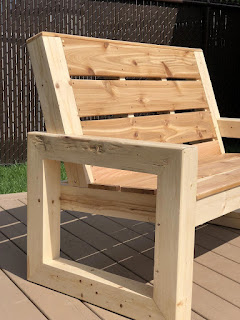Craft a Compact Wine Rack: A Beginner's Guide
Tired of wine bottles cluttering your countertops or overflowing from precarious stacks? This project guides you through building a simple, space-saving wooden wine rack perfect for even the smallest apartments or kitchens. Forget expensive, mass-produced racks; you'll create a beautiful, personalized piece that complements your home's style. Let's get started!
Gathering Your Supplies: A Quick Shopping List
Before diving into the construction, gather your materials. This project utilizes readily available materials, making it both affordable and accessible. You'll need the following:
- Wood: Select 1x4 pine boards (approximately 8 feet). Pine is inexpensive, easy to work with, and readily stains or paints to match any decor. You can also experiment with other hardwoods for a more luxurious feel.
- Wood Glue: Opt for a high-quality wood glue for strong, durable joints.
- Wood Screws: 1 1/4 inch screws will suffice for this project. Choose a type that matches your wood.
- Sandpaper: Use various grits (e.g., 80, 120, and 220) for smoothing the wood.
- Wood Finish (Optional): Choose a stain, paint, or sealant to protect and enhance the wine rack's appearance. A clear sealant offers protection without altering the wood's natural beauty.
- Measuring Tape and Pencil: Essential for accurate cuts and marking.
- Safety Glasses and Hearing Protection: Always prioritize safety when working with power tools.
- Saw (Hand Saw or Circular Saw): Choose the saw that best suits your skill level and comfort.
- Drill with Drill Bits: A drill is necessary for pre-drilling holes to prevent wood splitting.
- Clamps: These will help hold the pieces together securely while the glue dries.
Constructing Your Compact Wine Rack: Step-by-Step Guide
Cutting the Wood: Precision is Key
Begin by carefully measuring and cutting your 1x4 pine boards. For a six-bottle rack, you'll need three pieces at 16 inches long (the vertical supports), and six pieces at 11 inches long (the bottle rests). Accuracy here is paramount; use a sharp saw and a straight edge for clean cuts. Double-check your measurements before making each cut.
Assembling the Rack: A Simple Framework
Apply wood glue to the ends of the 11-inch pieces. Position two of these pieces horizontally, creating a "V" shape on one of the 16-inch supports, with the top edges flush. Secure the pieces using wood screws, pre-drilling pilot holes to prevent the wood from splitting. Repeat this process on the other two 16-inch supports, creating two identical upright units.
Finishing Touches: Smooth and Protect
Once the glue is completely dry, carefully sand all surfaces of your wine rack, starting with coarser grit sandpaper and moving to finer grits for a smooth finish. This step will eliminate any splinters and ensure a professional look. Then, apply your chosen wood finish. Allow ample drying time before placing your bottles inside.
Adding Personal Touches: Beyond the Basics
This basic design is easily customizable. Consider adding:
- Decorative molding: Attach small pieces of molding to the edges for a more refined look.
- Different wood types: Experiment with hardwoods like walnut or cherry for a richer aesthetic.
- Custom staining or painting: Match your wine rack to your existing furniture or add a pop of color.
- Custom sizing: Adjust the dimensions to accommodate your specific space and wine collection.
With a little time and effort, you'll have a handcrafted wine rack that is both functional and a stylish addition to your home. Enjoy the process and the fruits (or rather, wines) of your labor!















